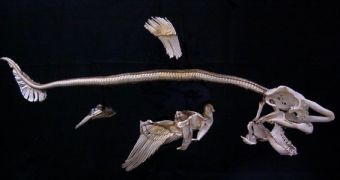A Great White may not be gentle enough to tickle you under the chin before applying its deadly bite, but our finger and toes sprouted from what could be called a 500 million years genetic cookbook that sharks still possess, as found by a team at the University of Florida.
While investigating development in shark embryos, the team detected a burst of genetic activity encountered in digit development in limbed animals.
Previously it was thought that transition from fins to limbs meant the addition of an extra-phase of gene activity during embryonic development, believed to be absent in the case of fish fins.
It appears that digits are not such a novel evolutionary patent and the new research could cure digit defects in humans at birth, affecting roughly 150,000 newborn each year in the US.
"Genetic processes were not simple in early aquatic vertebrates only to become more complex as the animals adapted to terrestrial living. They were complex from the outset. Some major evolutionary innovations, like digits at the end of limbs, may have been achieved by prolonging the activity of a genetic program that existed in a common ancestor of sharks and bony fishes." said developmental biologist Dr. Martin Cohn, an associate professor with the UF departments of zoology and anatomy and cell biology and a member of the UF Genetics Institute.
These genes increased their role about 365 million years ago in amphibians' ancestors attempting to adapt to swamps and terrestrial environment. Investigating embryos of the spotted catshark, the team detected the activity of Hox genes, which control how and where body parts develop in all vertebrates, humans included. A phase of gene expression in sharks had been believed to take place only when digits emerged in limbed animals.
The researchers believe that sharks and other fish types do not form complex appendages during the Hox gene expression because it takes place briefly and only in a small strip of cells.
"We know when this particular Hox gene is mutated in humans, it results in malformations of fingers and toes. Until now it was thought these mutations were affecting a relatively recent innovation in the genetic process of limb development. Our results show that this phase of Hox expression is much more ancient and suggest that if the origin of digits involved a prolonged activity of Hox genes, a truncated period could result in defective digits." said Cohn.
This research shows that the genetic processes required to develop fingers and toes emerged over 500 million years ago in the common ancestor of cartilaginous fish (sharks) and bony fish, 135 million years before digits appeared in the first four-limbed vertebrates.

 14 DAY TRIAL //
14 DAY TRIAL //